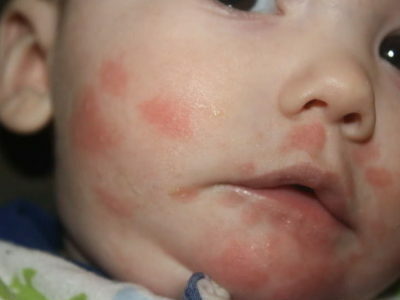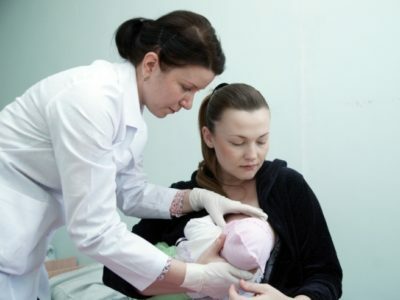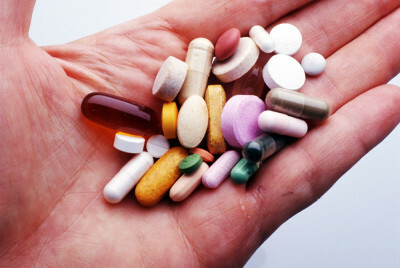1 What is lactose?
Lactose is a natural sugar that is found only in dairy products. Breast milk is a unique substance in which easily digestible proteins, fats, vitamins, essential acids, immunoglobulins and many other components necessary for infants to develop properly and sound health are present. Mother's milk is irreplaceable in terms of naturalness. It is ideal for baby food, which is why mothers are recommended to breastfeed as long as possible, because no producer of infant powder mixture can produce a complete analogue of mother's milk. However, it sometimes happens that milk causes problems in children.
Do you have gastritis?
GALINA SAVINA: "How easy is it to cure gastritis at home for 1 month. A proven method - write down a recipe. ..!"Read more & gt; & gt;
Lactose, which is one of the components of breast milk, consists of:
- glucose( a colorless crystalline substance with a sweet taste and a source of energy in infants);
- galactose( a substance that forms the nervous system).
Lactose, which enters the gastrointestinal tract, is digested with lactase, an enzyme that is produced by enterocytes. When this enzyme is produced in small amounts, unassorted lactose remains in the intestine, thereby becoming food for microorganisms capable of provoking the formation of gases, colic in the abdomen, stool changes, rashes, etc. This is the intolerance of lactose, or, as it is also called, lactase deficiency.
Intolerance to milk sugar is widespread, and it is not always possible to treat it as a disease. Most people do not experience discomfort in connection with this phenomenon. However, for newborn children, this insufficiency is a big problem, becauseMother's milk is the main food for children under the age of 1 year. Such an anomaly is a threat to the baby, becauseexcess lactose, causing malfunctioning of the body, can lead to a delay in physical development. In addition, studies show that the use of breast milk and its normal digestion increases the level of assimilation of vitally important minerals( calcium, magnesium, zinc, iron) that are necessary for the child to develop properly. In adults, however, such intolerance does not cause any particular problems.they can simply stop using milk and get vitamins and minerals from other types of food.
-
 IMPORTANT TO KNOW! Gastritis? Ulcer? To have a stomach ulcer not turned into cancer, drink a glass. ..Read the article & gt; & gt;
IMPORTANT TO KNOW! Gastritis? Ulcer? To have a stomach ulcer not turned into cancer, drink a glass. ..Read the article & gt; & gt;

Recommended to read
- Symptoms of lactose deficiency
- What is colic in an infant
- Regurgitation in newborns
- Effective agent for gastritis and gastric ulcer
2 Causes of the
ailment There are several reasons for this anomaly.
There is physical lactase deficiency. At the majority of children since 3 years the given phenomenon is considered normal, and more often it carry to an adult of an organism. The decrease in the production of the enzyme in the intestine begins as early as 2 years, and already at 6 years, this level may decrease to such an extent that the child can not digest a large amount of milk. This is a physiological process, and it is considered quite normal and correct.

A huge problem is precisely the early lactose intolerance, which manifests itself in children in the first year of life. One of the possible causes of congenital insufficiency can be attributed to the total inability of the intestine to produce lactase. Nowadays such a disease is extremely rare in children. Also, the inability to produce this enzyme for a certain time occurs in premature infants and is associated with the immaturity of the gastrointestinal tract.
Acquired lactase deficiency occurs very often and is a consequence of diseases, infections or inflammatory processes of the intestinal mucosa that disrupt the performance.
-
 Gastroenterologist. IMPORTANT: "I beg you, if you started to worry about abdominal pain, heartburn, nausea, do not do gases. .."Read more & gt; & gt;
Gastroenterologist. IMPORTANT: "I beg you, if you started to worry about abdominal pain, heartburn, nausea, do not do gases. .."Read more & gt; & gt;
Another species that occurs quite often is the excessive content of milk sugar. The child's gastrointestinal tract works normally in such cases, but because of the excess of lactose production symptoms of insufficiency show up, often this happens when the baby uses milk, which first stands out from the chest. Usually it is a lot of sugar.

3 Symptoms of pathology in infants
Physicians usually refer to symptoms of lactase deficiency:
- colic;
- bloating;
- regurgitation;
- liquid stool with a sour odor and lumps;
- constipation;
- restless state of the child.

However, if you find these symptoms, you should not immediately look for this intolerance of the lactase enzyme, because such symptoms often occur in absolutely healthy children. And that's why this diagnosis is made today almost every child. Most of the above symptoms are absolutely normal and do not pose any threat to the baby.
Colic and bloating are seen in 9 out of 10 children, and this does not mean that only 1 in 10 is healthy. Such signs are normal up to six months of life. Regurgitation is also considered the norm in children under 1 year of age,can arise because of banal overeating. If the regurgitation of the child is uninfluenced and infrequent, then do not worry, anxiety should be beaten if they are too strong. The liquid stool of children up to a year in 95% is formed due to liquid food.
TIP FROM THE MAIN GASTROENTEROLOGIST
Korotov SV: "I can recommend only one remedy for the rapid treatment of Ulcer and Gastritis, which is now recommended by the Ministry of Health. .." Read testimonials & gt; & gt;
More likely symptoms include:
- slow and insufficient increase in height and weight;
- frequent watery stool, lag in development;
- rash;
- anemia;
- constipation.

At the first suspicion of lactase deficiency, you should immediately consult a doctor to determine the diagnosis and potential dangers to the child.
4 How to identify the disease?
For the diagnosis of failure, various tests are submitted. Only after their delivery, a competent and experienced doctor can confirm or deny suspicions of this diagnosis.

The norm of carbohydrate content in feces in children in the first year of life is the figure of up to 1%.Exceeding this rate is a possible indicator for determining lactose intolerance.
The doctor determines the pH of the stool. A pH of 5.5 or lower may be a sign of lactose deficiency. A biopsy of the intestine( sampling of the small intestine mucosa sample) is performed. This method is the most informative, but it is rarely used.
Diagnosis is carried out using a hydrogen test. The breast is given a certain dose of lactose, after which the doctor takes blood several times to build a special schedule. This method is also used quite rarely, becauseThe introduction of lactose can cause unpleasant sensations in the child. And there is no specific level of hydrogen in children under 1 year.
WE RECOMMEND!
For prevention and treatment of Digestive Diseases our readers advise Monastic tea. This unique remedy consists of 9 medicinal herbs useful for digestion, which not only supplement, but also strengthen each other's actions. Monastic tea will not only eliminate all symptoms of the gastrointestinal tract and digestive system, but will also permanently eliminate the cause of its occurrence.
Opinion of doctors. .. "

Thus, it is impossible to accurately identify lactase deficiency in a children's hospital. Usually such an anomaly is a consequence of another disease.
5 Treatment activities
First of all, mothers breastfeeding, it is necessary to start feeding, so that the child can eat fatty milk, which contains less sugar.
For this it is necessary:
- to express the first milk before the beginning of the meal;
- apply to one breast at a time;
- teach the baby to eat milk more actively;
- keep on giving the breast until the child releases it.
In addition, you need to change the diet of the mother herself. It is necessary to exclude from the menu whole milk, the allergy to which often leads to lactase deficiency, and to remove from the diet sweet( chocolate, sweets, etc.).Most often this is enough to exclude this anomaly in the child. However, sometimes you have to start medical treatment, which includes:
- reception of additional enzymes that are added to the milk before feeding;
- switch to a low-lactose diet.
Most often, the treatment of this disease lasts for several months, and then the child's body begins to produce the necessary enzymes.
Usually, problems with the intestines in children arise due to improper breastfeeding, so giving the baby extra lactose or transferring it to lactose-free breastfeeding costs only if nothing helps, and only after consulting and prescribing the doctor.
- 1 What is lactose?
- 2 Causes of the onset of the disease
- 3 Symptoms of the pathology in infants
- 4 How to identify the disease?
- 5 Treatment measures
When lactose intolerance arises, the symptoms in infants depend on the amount of lactase produced. Symptoms usually begin within 30 minutes - 2 hours after eating dairy products. With lactose intolerance, you do not need to panic and diagnose your child, the main thing is to turn to a doctor in time.



